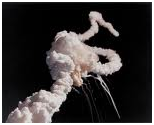Seeing a “Gulf Disaster – Tracking the Numbers” chart on CNN.COM this morning made me ill:

CNN.COM June 29, 2010, 9:00AM EST
As an engineer by training, and a lifelong technologist, I know there’s no good reason for the shortcuts taken by my fellow engineers on at BP.
And while the company is working feverishly to clean up their image, the Gulf area will take decades at minimum to recover:

BP Website
Think about systems in the rest of the world. In the following picture in a hospital ER room, there are

Picture by Author
a wide variety of systems working together in harmony and safely. There’s power, oxygen, vacuum, heart monitor, eye/ear devices, and the ubiquitous television (the TV is out of the picture, and the control is not.) And then there are mechanical systems (gurney, HVAC, structural, lighting, etc.) This picture was taken with a RIM BlackBerry, and sent to my hosted Microsoft Exchange email over the AT&T network.
By having solid designs and safeguards, these tools make the medical profession more effective and save lives.
When it comes to energy, we shouldn’t have to decide between oil or the environment. Engineers know how to do things safely. When shortcuts are taken (as is now being suggested in the Gulf), inevitably “bad” things happen.
Engineers are not infallible. Mistakes, or out of bound conditions do happen even to the best with disastrous results:

As systems types, we are often “under the gun” to deliver things quickly. And with some planning, “just in time” philosophies, and some smarts, we can deliver!
When you are asked to make a professional compromise….consider alternatives to mitigate risks and achieve the objectives. And remember what can happen when risks are not mitigated.